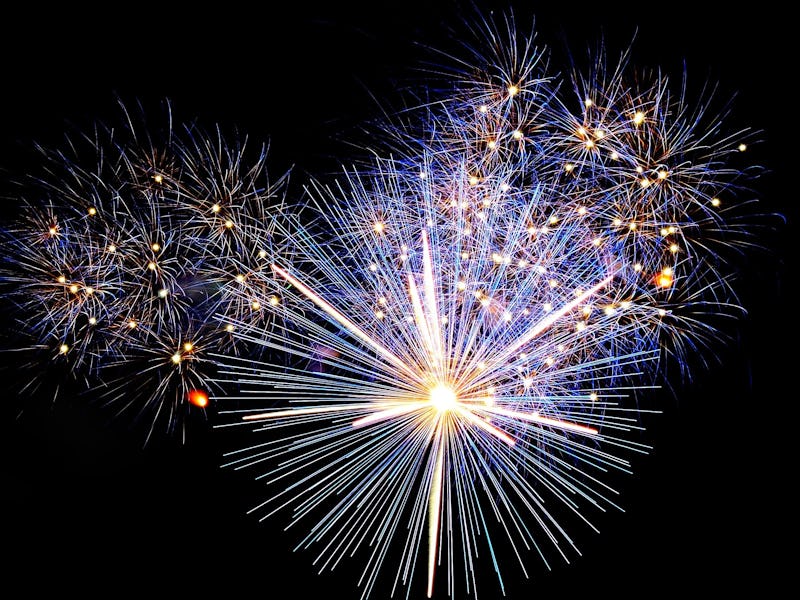Robots Could Set Off Fireworks Next Year, Says Firework Designer
It's the next step for the software used to design Fourth of July fireworks displays.

Next year, fireworks could be ignited by robots based on musical cues set in the sophisticated design software that has changed the Fourth of July.
Firework shows today are produced with incredibly advanced design and production tools: Visualization technology has exploded to help firework show designers build increasingly complicated firework shows and develop new shells. The famous 167-year-old family-owned firework company Fireworks by Grucci, is using this technology to help create cutting-edge firework shows and develop new fireworks. And some of those will be on display at the Boston Pops Fireworks Spectacular this year.
“Now we are working on connecting to robots,” Alberto Navarro, director Infinity Visions, a firework show design software company, tells Inverse. “It’s going to be like a real painting in the sky, it won’t be traditional fireworks anymore, it will be something different.”
Navarro’s design software allows firework show designers to build a show by layering bursts over musical cues, as if it were a film-editing software. But the real power of the software lies in its ability to animate firework shows in 3D models venues they will be held. This visualization hides a sophisticated particle animation system powerful enough to individually animate how individual sparkles move, and how that changes in different wind conditions.
“It’s a tool that becomes very effective when you start looking at layering,” Phil Grucci, CEO of the famous family-owned fireworks company Fireworks by Grucci tells Inverse. Firework shows are built on scenes, he says. And it’s not always easy to know when a firework is lingering in the sky and bleeding into the next scene. “That’s where the visualization really helps,” says Grucci. This year, Navarro has outdone himself and if the show is over water, not only do you get the reflection of the fireworks, but the water actually ripples.
Once a show is designed, the same software automates the firing of the actual show. For this Fourth of July, the software can connect to the pyrotechnic effects you might expect at a rock concert. Next year, Navarro hopes that he will have developed the tools to allow for robots to be incorporated into the firing systems. “Then the robot will aim the tube in the direction and move to the next shot,” he says.
This will look more like mechanical light fixtures that automatically loads fireworks and adjust its shooting angle than a firework shooting C-3PO, but marks a major change in fireworks technology. The equipment used to shoot fireworks is typically fixed, says Grucci. Once it’s set, the pyro-technicians back away and let the software ignite the fireworks according to the cues. But moving fixtures allows for more dynamic elements in a show, without safety risks or adding more expensive equipment. “That’s powerful, to be able to do that because it gives the designed a lot more to work with,” Grucci says.
Already the automated-firing connected to the software has made it possible for Grucci to increase the technology on board his fireworks. “We’ve developed and patented a very small microprocessor that we put on the side of some of our aerial shells to control exactly where it explodes in the sky,” says Grucci. It’s a patented design called a PixelBurst, and it allows the company to draw in the sky timed to the millisecond with music. Each shell is a 30 foot explosion, and used like a pixel on a screen to make giant pyro-images. This year for the Boston Pops Fireworks Spectacular, the PixelBurst shells will be used to spell “USA” in 700 foot tall letters over the memorial bridge in red, white, and blue. “It gives us the opportunity to produce different looks and scenes that people haven’t seen before,” says Grucci.